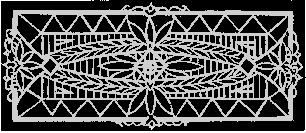1
: ornamental work especially of fine wire of gold, silver, or copper applied chiefly to gold and silver surfaces
a headband decorated with silver filigree
2
a
: ornamental openwork of delicate or intricate design
b
: a pattern or design resembling such openwork
Subscribe to America's largest dictionary and get thousands more definitions and advanced search—ad free!
Merriam-Webster unabridged


 Jack Beatty
Jack Beatty
Share